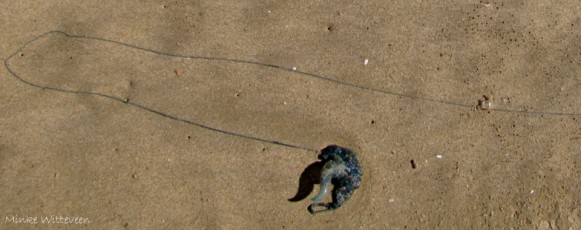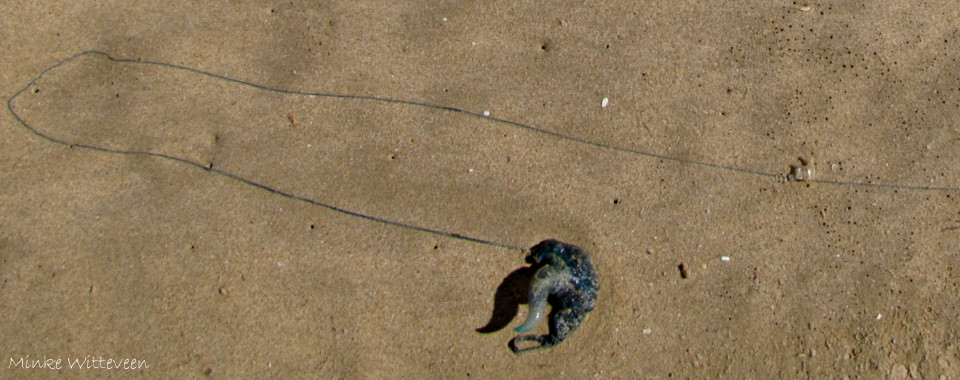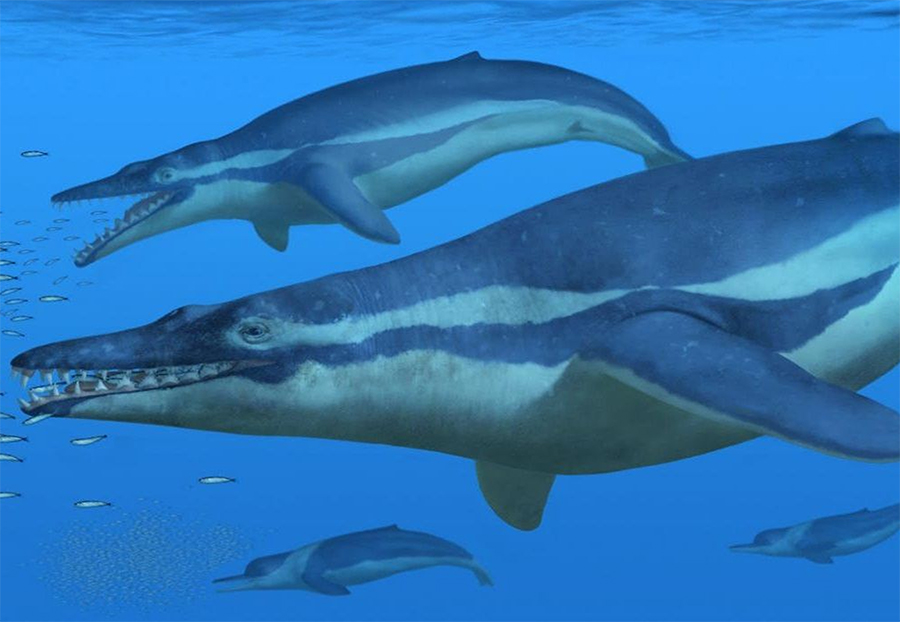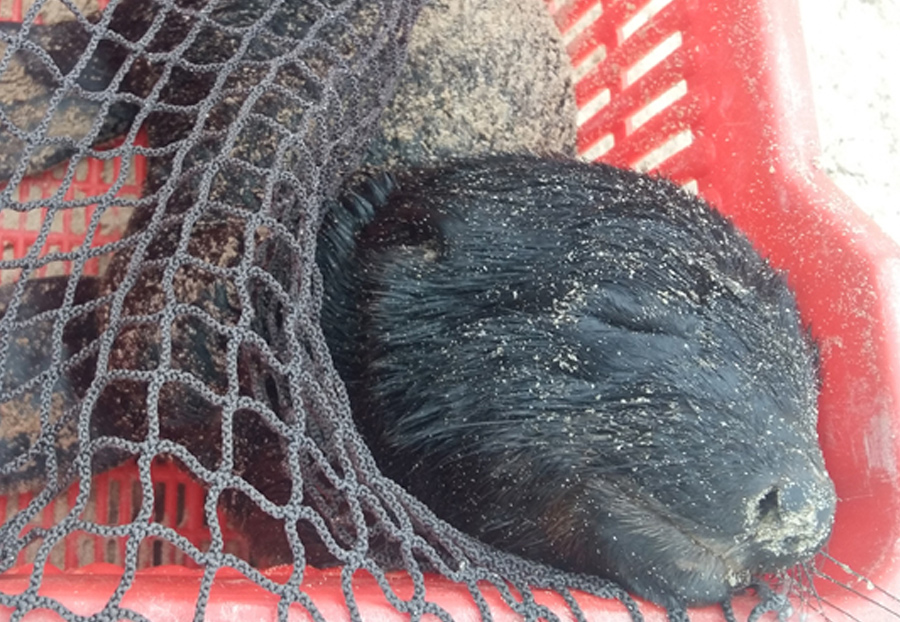All for one, and one for all

With a hop, skip, jump or large step, everyone knows to avoid bluebottles Physalia physalis with their unmistakable blue float and long trailing tentacles which deliver a painful sting. Although commonly called bluebottles, individuals of this species are also known as Portuguese men-of-war. The float of the bluebottle averages 10 cm in length, and is a blue-green colour with a purple-pink crest. The float, which sits on top of the surface of the water, contains gas which is of a similar composition to air, but contains up to 8% carbon monoxide. The tentacles can grow up to 10 m, but when contracted are only 30 cm, and contain stinging cells. The pelagic fish and other prey animals that come into contact with the stinging tentacles are stunned. That said, there are a few species that can actually eat bluebottles, tentacles and all, one of which is the loggerhead turtle. Of particular interest, is that each bluebottle is a colony of highly specialized individuals. One forms the float, other individuals are tubular with a mouth, while others together form the tentacles, and yet more are for reproduction. However, despite being specialized individuals they are physiologically united!
Written by: Minke Witteveen
For more reading:
• Branch, G.M., Griffiths, C.L., Branch, M.L. and Beckley, L.E. 2010. Two Oceans: A guide to the marine life of southern Africa. Pp. 56. Random House Struik Publishers, Cape Town.
• Fish, J.D. and Fish, S. 2011. A Students Guide to the Seashore. 3rd edition. Pp. 119. Cambridge University Press, Cambridge.




